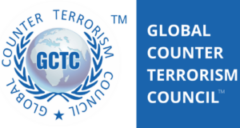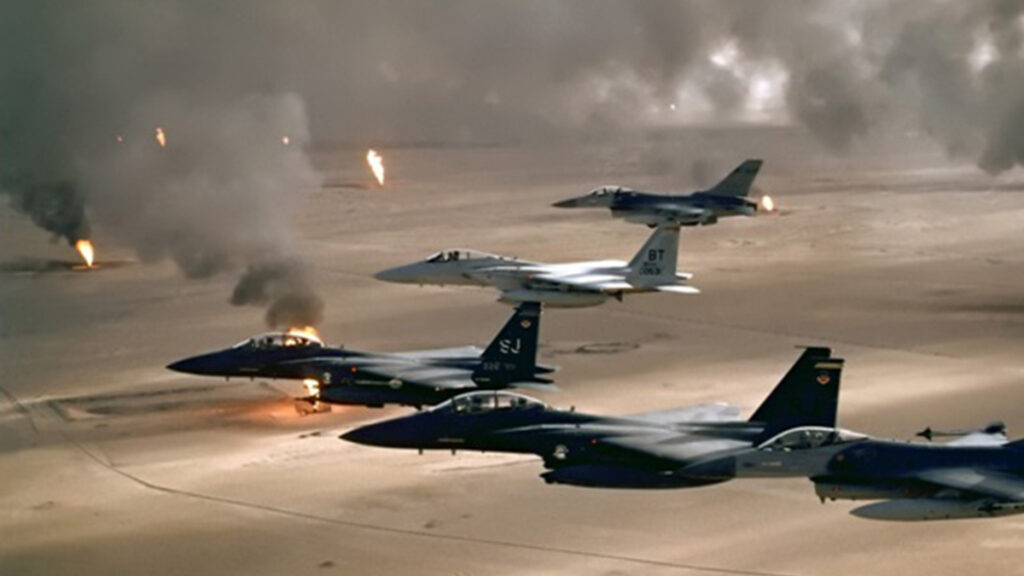Since 11 September 2001, trans-national terrorism has assumed a greater significance in the minds of the defence planners. Subsequent events, such as the attack in Bali, London and Jakarta are evident , that the issue of terrorism has a long way to go , before letting it go completely. Despite use of air power in countering terrorist threats, the application of contemporary air power capabilities is highly being questioned in combating terrorist threats(Murthy, 2008).
These new versions of terrorism are associated with Al Qaeda and Jemaah Islamiyah (JI) , which pose a great threat to both the interest and security of individual nations and also questions the life span of the civilians residing in a particular country. Many terrorist activities have crossed borders, thus framing the name of transnational terrorism and posing new variations of questions for the security and defence of the Global Community. (Sam Gray).
India used Air power as a defence mechanism for the first time in a less then war scenario- crossing the Line of Control (LoC) , on an offensive attack mission inside Pakistan for the first time since the 1971 Indo-Pak War.(Khosla, 2020).
This paper shall discuss thoroughly the use of offensive air power in major counter terrorist operations in countries of USA, Pakistan and India and their co-relation with one another. It shall further pin point the risk factors involved in use of Offensive air power and what are the major challenges faced by the Military and defence in successfully accomplishing their missions.
COUNTER TERRORISM OPERATIONS: A GENERIC OVERVIEW :
INDIA : According to the reports of the Human Rights Watch , the Indian Government is using counterterrorism operations to silence peaceful dissenters, human rights activists and journalists. On October 28 and 29,2020, the authorities carried out several raids on the offices of nongovernmental organizations, activists, homes and newspaper office in Jammu and Kashmir, Delhi and Bangalore. The National Investigation Agency (NIA) , which conducted the raids, has accused the targeted groups that they have collected funds from the people in the name of Charitable purposes and at the end used it for carrying out secessionist and separatist activities in Jammu and Kashmir.(India: Counter Terrorism Raids Targeting Peaceful Critics: Stop Unlawful Operations Against Kashmir& Other Right Groups , Oct 30,2020).
The 2018 National Defence Strategy made a clear declaration that Inter-State Strategic Competition and not Terrorism is the ultimate goal in U.S. national security. In addition to exerting ongoing pressures on terrorist organizations, American forces enable intelligence collection-especially in hostile environments and provide the means to conduct swift action against individuals and networks involved in plotting, directing or attempting to inspire attacks against the United States. A military counter-terrorism presence can facilitate activities conducted by civilian departments and agencies as well as make U.S partners more effective. When it comes to resourcing America’s counter-terrorism operations, it is important to distinguish financial resources from the people and platforms that money pays for.
There are an estimated 8,500 troops in Afghanistan, 3,000 in Iraq and smaller numbers in Syria Somalia ,Yemen etc ,mainly working with local partners and conducting direct action strikes to supplement these indigenous efforts of U.S military in the name of Counter-Terrorism Operations. (Tankel, Sep 28, 2020).
NATO COUNTRIES : Terrorism in its all forms poses a threat to the security and peace of the NATO countries and to international stability and prosperity. NATO’s specific focus in counter-terrorism operations includes improving awareness of the threat, developing capabilities to prepare and respond, and enhancing engagement with partner countries and other international actors.
NATO’s counter-terrorism policy guidelines focuses on three main areas- awareness, capabilities and engagement. NATO also has a Terrorist Intelligence Cell at NATO Headquarters and also a Coordinator oversees NATO’s efforts in the fight against terrorism. A regional hub for the South, based at NATO’s Joint Force Command in Naples helps the Alliance anticipate and respond to crisis arising in its Southern neighborhood. NATO is also a member of the Global Coalition to Defeat ISIS and support it through AWACS Intelligence Flights. NATO develops new technologies and strategies year by year, upgrading and coping with the changing dynamics of Global Terrorism , to tackle quite precisely and wisely the consequences of a terrorist attack. NATO cooperates with international partners and organizations to leverage the full potential of each stalk holder engaged in the global counter terrorism effort.(Countering Terrorism, 2019).
PAKISTAN : Pakistan adopted its counter-terrorism strategy right after the 9/11 attack, claiming that it has failed in uprooting the terrorist network of Pakistan based militant Jihadi and extremist groups, which also have links with Al- Qaeda. Since the 9/11 attack , Pakistan has been facing a series of antistate terrorism and sectarian violence , torn apart by the home based Jihadi and Extremist terrorists groups shuttering off the hard earned democracy of the country. The militant groups have now turned against Pakistan and its people. Internal Security has collapsed to the extent that- General Ashfaq Parvez Kalyani , Pakistan’s Chief of Army in his 14th August 2012 speech highlighted that – “internal threat is bigger than the external one”.
The counter-terrorism policy of Pakistan, highly focuses on combating Taliban existence and also collaborating with other groups to hault external threat from India and also Afghanistan. While Pakistan’s counter terrorism strategy has proven ineffective in overthrowing the home grown terrorist network, the success of the strategy highly depends upon the major shift in its national policy.
Pakistan has employed both military and non-military strategies to deal with the terrorists. The military strategies includes heavy handed security options against militants in the tribal areas and low intensity operations against Al Qaeda and Taliban’s. The non-military strategies include engagements in the form of peace deals and introduction of various anti-terrorism legislations in the shape of presidential acts and parliamentary laws. Some major reasons for presence of low backup of counter-terrorism force in Pakistan is its- strategic interest in the region, skewed civil-military relations and lack of national consensus on the ownership on “war on terror”. Pakistan can improve its security by transforming itself into a welfare state and also at the same time engaging into peaceful relations with the neighbors respecting their sovereignty.(Ahmed, 2014).
USE OF OFFENSIVE AIR POWER IN COUNTER-TERRORISM OPERATIONS
CASE STUDY:
Air Power has a key role to play in today’s counter insurgency operations, but its role take a quite new turn when it comes to conventional warfare. During the Kosovo air campaign of 1999 and the conduct of the conventional phase of both recent Iraq Wars, it was quite evident how air power managed in bringing about a decisive victory. The traditional functions of air power-hitting critical targets deep below the enemy’s lines, destroying command and control functionality and suppressing the enemy’s strength to sustain and deploy his forces.
Counter-Terrorism tasks involve intelligence collection, monitoring communications, surveillance on specific locations, tracking terrorist movements and getting insider information to launch a ore-determined strike on terror locations, hideouts etc. Air Power has the constitutional capacity to further each of these tasks quite comprehensively. Air Power performs two main tasks- i.e. prevention and response as depicted by the aerial strike on the Jaish-r-Mohammed terror camp in Belakot on 26 February 2019.While the strike was in response to the Pakistani backed suicide attack on a CRPF Convoy on Pulwama , it was also aimed in preventing future attacks by killing Jaish-e-Mohammed operatives and destroying their training camps.
INDIA : Around 3,000 terrorists awaits for the standoff over the LOC, while Pakistan and India shares a very old relationship on the violence and terror front, while the new burning topic of Jammu and Kashmir heats up the situation by killing around numerous civilians and security forces personnel.
Airborne platforms provide a firm support to counter-terror ground operations, for tracking targets, situational awareness and target designation for strikes by armed helicopters , armed UAV’s make the most significant contribution by enhancing the timelines of battlefield information and situation development. For targeting and tracking terrorists our security forces must be enabled to receive real time images and videos streamed from UAVs and other sensors directly on to their patrol vehicles. This would bring the overall picture to them for planning their counter terror actions.
India struck Jaish-e-Mohammed’s (JeM) biggest camp in Pakistan early Tuesday in a major “non-military pre-emptive” action, killing a large number of terrorists and trainers of the Pakistan based terror group which, a top official said, was preparing to carry out suicide attacks in the country. In this operation of India at Balakot , a very large number of JeM’s terrorists, trainers and senior commanders and groups of jihadis who were being trained for fidayeen action were eliminated. A total of 16 aircraft, six each armed with Spice 2000 and Crystal Maze missiles, flew into POK and struck Belakot terror camp while 4 remaining in Indian territory as back-up.(Indian Air Force Strike in Balakot, 2019).
U.S.A : The United States on April 14, 1996, launched Operation El Dorado Canyon , a successful mission that hit Col. Muammar Qaddafi squarely between the eyes. Working with carrier aircraft of the US Sixth Fleet, Air Force F-111s of the 48th Tactical Fighter Wing flew what turned out to be the longest fighter combat mission in history.
The United States Air Force Perform the following functions in Counter Terrorism Operations:
(1) Provide Surveillance Platforms, operations and analysts.
(2) Base operating support personnel and equipment to provide vital functions, such as communications, housing and transportation at a wide range of operating locations.
(3) Humanitarian relief assets, including engineers, doctors etc.
Pakistan : When terrorism from non-state actors started threatening the peace and security of the country, Pakistani Air force (PAF) started its counter-terrorism operations for the first time. Air operations by PAF against militants in FATA were first conducted in Operation Al-Mizan in 2004 on a limited scale.
In January 2008, PAF undertook operations in support of Pakistan Army in South Waziristan under code name Operation Tri Star. PAF fighter jets provided the capability to reach quickly from operational bases, reaching anywhere in FATA, within minutes.
These counter-terrorist missions were first of a kind conducted by the air force which bore fruit and highlighted the importance of air power in these kind of operations , where PAF has been playing a commendable role and shall continue to play until and unless they succeed in bringing back the peace and stability in entire Pakistan and also the entire region.
OBJECTIVES OF USE AND ANALYSING THE RISK FACTOR :
Air power offers numerous advantages when conducting counter-insurgency warfare due to its ability to cover large distances and react quickly with overwhelming force.However as rightly stated all things come with its specific limitations, so does the use of Air Power. Many of the traditional roles of Air Power considered to be the cornerstone of air power theory are instead questionable and are less effective in counter- insurgency operations. Strategic bombings may be effective in isolated cases, but the smaller number of targets and the nature of insurgency will not make it decisive.
Targeted killing may be useful in certain situations, but the most effective roles for offensive air-power in counter-insurgency warfare are interdiction and CAS. Interdiction degrades the adversary’s ability to command and control its forces and also make its resupply more difficult. The enemy is forced to adapt by avoiding the overt movements of large numbers for long periods of time, as they are vulnerable to attack. The availability of CAS further enables friendly forces to be deployed in more areas throughout the theatre, thus working in support of the fundamental counter-insurgency policies.
The quantum of risks and benefits of Air Power in counter-insurgency warfare can also be analyzed by focusing on the tools required to apply offensive air power practically and successfully throughout the battlespace. While evaluating the suitability of offensive air power tools in counter-insurgency warfare, the following factors should be considered –
(1) Ubiquity- offensive air power much be able to operate throughout the battle space.
(2) Speed- offensive air power must be able to respond rapidly to situations on the ground.
(3) Firepower- offensive air power must possess the capability to destroy or neutralize potential target sets.
(4) Survivability- vulnerability to attack must be minimized or eliminated.
The benefits should be accelerated and the risk factors should be decreased. BY understanding how platforms, sensors and weapons can be applied to the counter-insurgency campaign , a more coherent and effective strategy for the employment of offensive air power should be employed.
LESSONS LEARNED FROM OFENSIVE AIR-POWER :
Worldwide air-power is being used very often in NWNP environment. For the future also , aerospace power will be invariably be the weapon of choice. A potent aerospace force has to be ready to deliver decisive blows at a very short notice, with precision and minimal collateral damage. A potent aerospace force has to be ready to deliver decisive blows at very short notice, with precision and minimal collateral damage. In this condition, availability of artificial intelligence, high-speed weapons and space-based sensors and tools will have a significant impact. Besides imbibing new technologies, innovation in use of existing capability would be the need of the hour.
This needs to be planned beforehand and the plans need to be reviewed and refined periodically with changes in circumstances and fresh intelligence inputs. Aerospace in the future should focus specifically on enhancing battle space transparency by keeping greater area under multiple sensor surveillance with better resolution. Weapons needs to be smart and standoff capacity should be prioritized.
Media engagement plan and organizational structure needs to be in place for perception management and giving out the narrative . While creating structures individually to provide the information in desired format, all stake holders need to work collectively in sync with each other.
CONSIDERATIONS FOR THE FUTURE :
It cannot be denied that insurgent methods of air warfare will remain in effect by the adversaries which shall provide them with distinct advantages. First, they negate much of the combat power of the west, particularly from air power perspective and secondly, insurgent methods are well suited to attacking the opposition’s will to fight such campaigns.
The nature of counter-insurgency warfare needs to be incorporated into air power doctrine so that air planners and operators at all levels understand the risks, damages and benefits of employing offensive air power in the counter- insurgency environment. The suitability of various forms of equipment used in the employment of air power must be developed to better fulfil the roles required to support a counter-insurgency campaign. The capacity of sensors to identify targets correctly from sufficient stand-off distances will also help in reducing the chance of fratricide or the targeting of innocents. Low yield weapons should be developed to reduce collateral damage.
The application of offensive air power in counter-insurgency operations should be given equal importance as the attention is given to the use of offensive air power in conventional warfare. The roles of offensive air power in counter-insurgency operations needs joint development from the outset, reducing the need for procedures to be developed hurriedly at the tactical level during the campaign. To achieve the greatest possible effect with the least probable chances of risk factors in the use of offensive use of air power in counter insurgency warfare- a focused, coordinated and dedicated effort is necessary.
CONCLUDING OBSERVATIONS :
The counter-insurgency warfare poses numerous threats for offensive air power- A counter insurgency war fare is likely to last long and military is just one factor in it. A broad strategy is required to succeed and any military involvement must be compatible with it. For applying offensive air power in any context, analyzing well its strengths and weaknesses is quite necessary.
When offensive air power is used against insurgents it needs to be done carefully, as poor tactical application may work against strategic goals. Incorrect targeting and collateral damage can have a very negative impact on the hearts and minds of the target population.
Air power delivers its effects using platforms, sensors and weapons. The suitability of equipment in supporting counter-insurgency air power roles will be related to how well it can enhance its power’s positive attributes while minimizing its negative effects.
Currently, air power doctrine is not focusing on counter-insurgency warfare and its principles. Offensive air power can play an important role in counter-insurgency warfare, but its advantages will not be maximized until these issues are addressed.
BIBLIOGRAPHY :
Ahmed, N. (2014). Pakistan’s Counter Terrorism strategy & its Implications for domestic, regional & international Security. HAL.
Beck, W. C. Offensive Air Power in Counter-Insurgency Operations. Royal Australian Air Force : Air Power Development Centre.
Buyne, W. J. (1999). El Doredo Canyon. Air Force Magazine.
(2019). Countering Terrorism. NATO/OTAN.
(Oct 30,2020). India: Counter Terrorism Raids Targeting Peaceful Critics : Stop Unlawful Operations Against Kashmir & Other Right Groups. Human Rights Watch.
(2019). Indian Air Force Strike in Balakot. THE HINDU.
Khosla, A. (2020). Offensive Use of Air Power in No War No peace Situation. usiofindia.org.
Kirmani, H. (n.d.). Pakistan’s Offensive Air-Power in Counter-Terrorism Operations. Hilai English.
Murthy, S. G. (2008). Air- Power and Trans-National Terrorism : The Possibilities, Advantages & Limits to Using Austrian Air Power in the War on Terror. Air Power Development Centre.
Ochmanek, D. (2003). Military OPerations Against Terror Groups Aroad : Implication For The United States Air Forces. RAND .
Phinney, D. (2007). Air Power versus Terrorism Three Case Studies. Air University Pren Maxwell Air Force Base, Albana 36112-5962.
R. Grisson, A. Air Power in Counter-Terrorist Operations : Balancing Objectives & Risks. The RAND Corporation.
Rai, R. (2020). Time to Call Air Power into J & K Counter Terrorism Mechanism. Sunday Guardian Live.
Staniland, P. (April, 2003). Improving India’s Counter-Terrorism Policy after Mumbai. Combating Terrorism Centre.
Tankel, S. (Sep 28, 2020). Making the US Military’s Counter-Terrorism Mission Sustainable.
Deeksha Bordoloi
Ph.D Research Scholar at Assam Women’s University, Department of Political Science. Areas of interest- Indian Politics, Global Politics and Gender issues.





